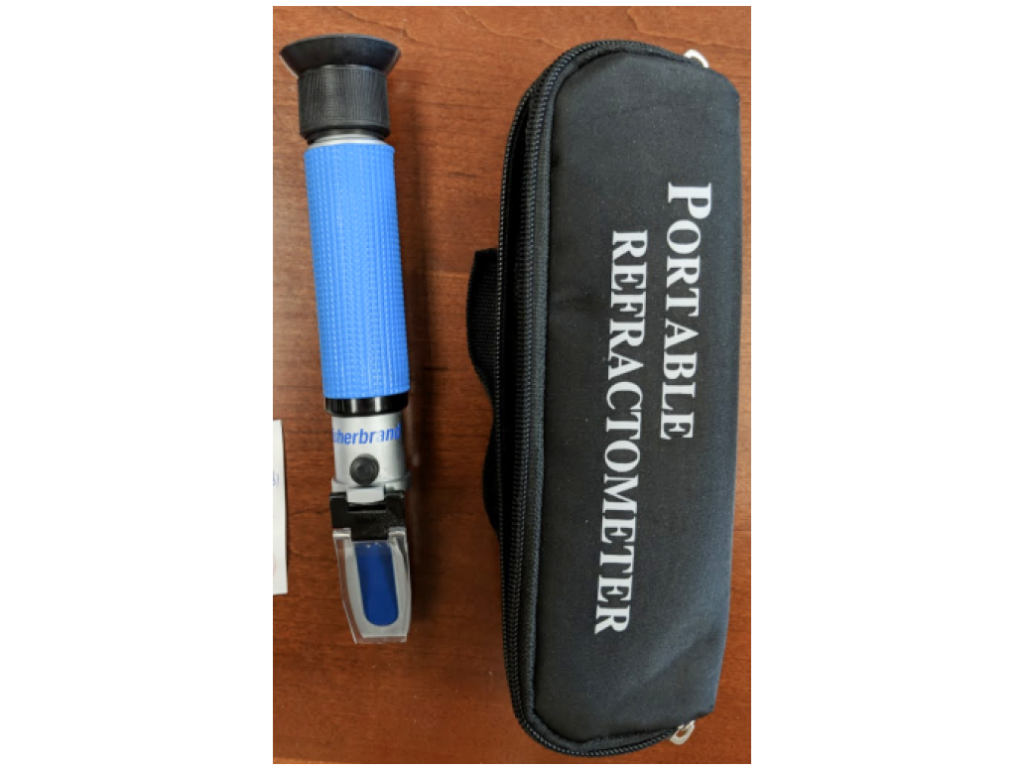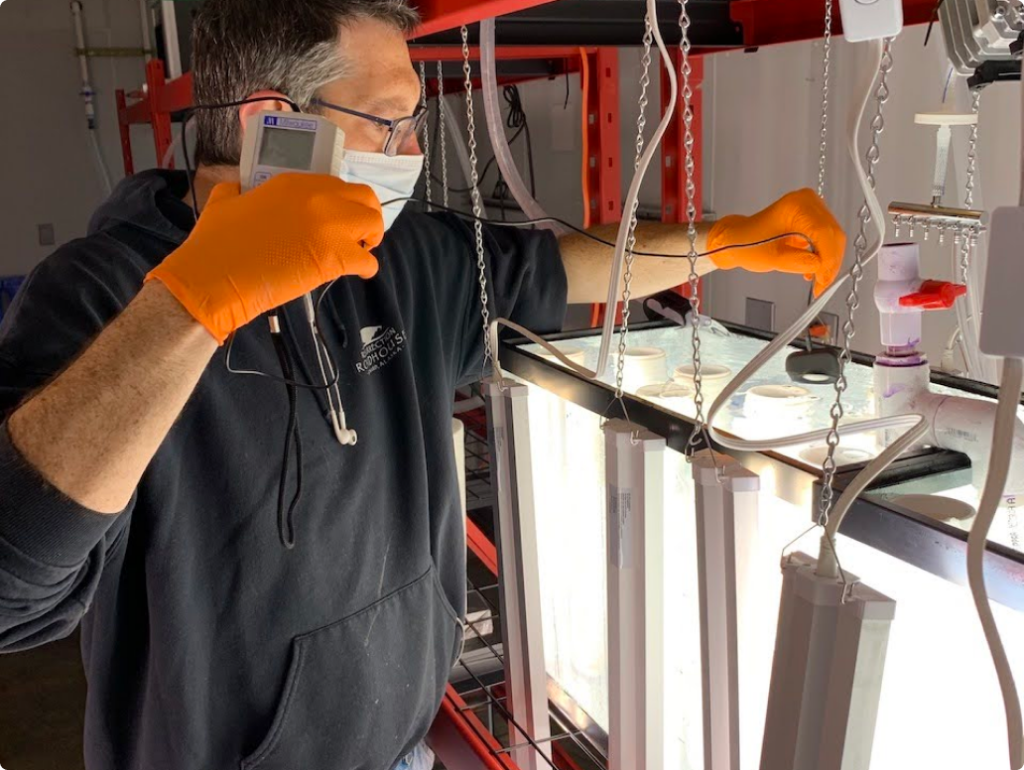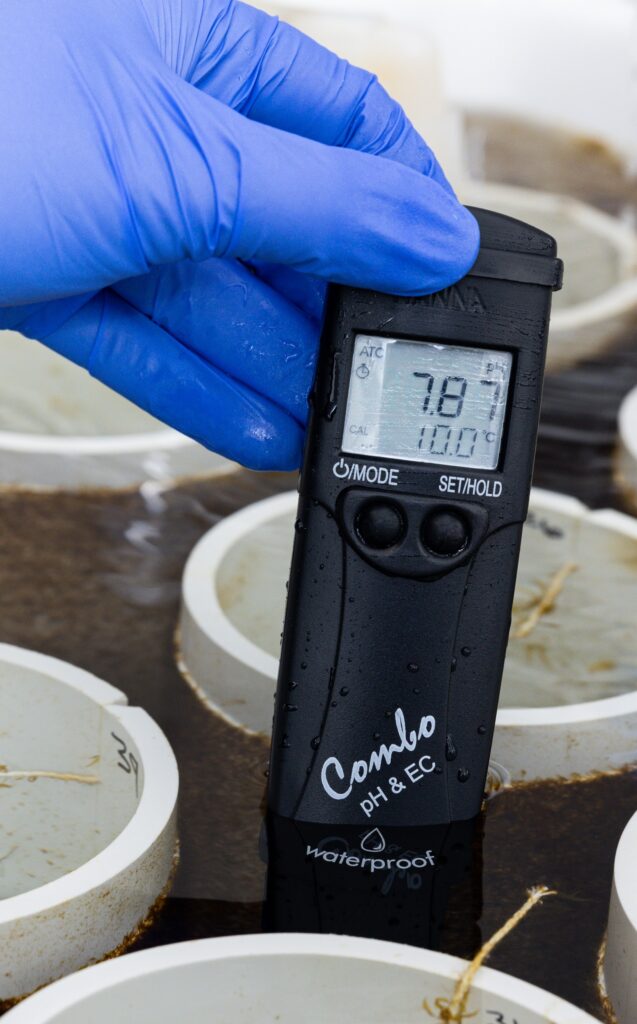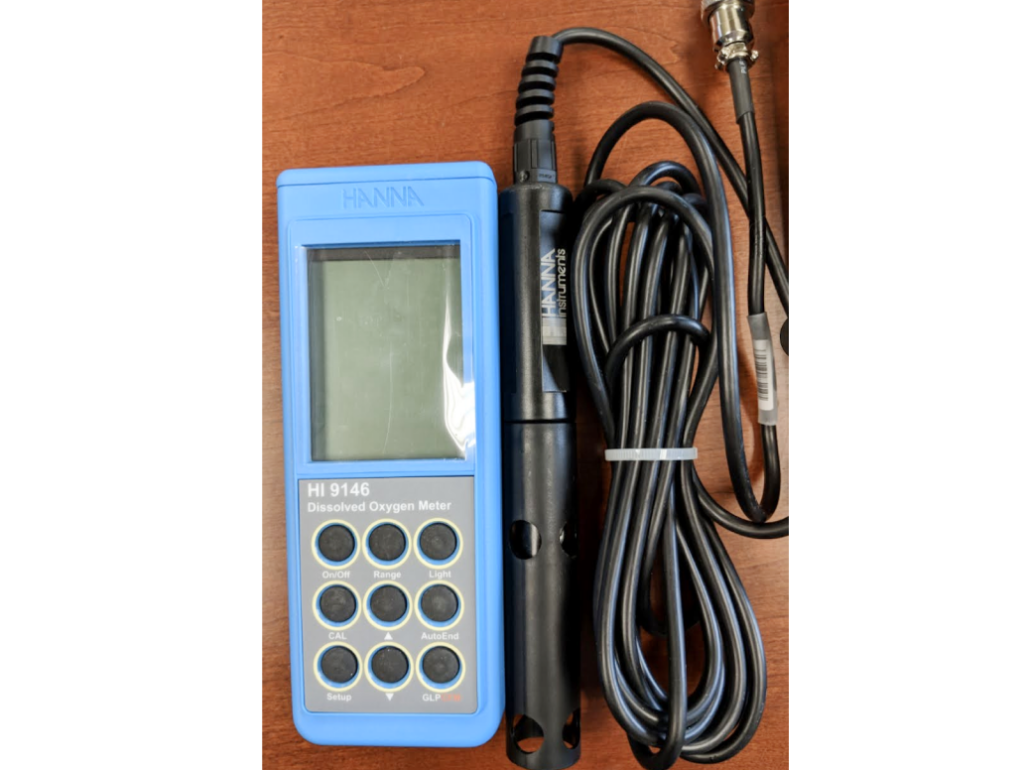Lesson 2
Daily Chores
Back to: Routine Maintenance
Monitor Water Quality
Depending on the size and goals of your operation, it may not be necessary to measure a suite of water quality parameters each week. For recordkeeping purposes, we measure the following list of parameters one to two times per week in the GreenWave hatchery.
- Salinity. Salinity in your tank should be between 28–34 ppt. You can measure the salinity with a refractometer. Your exact numbers may vary based on the region you are growing in. It is best to compare your tank conditions to the natural water conditions from your collection locations. If you are pumping in seawater, the salinity will normally be within the safe range as long as you are not pumping from an area with a lot of freshwater input. Evaporation in your nursery can also impact your salinity. If you have a lot of evaporation from your tanks in your nursery, monitor the salinity very closely and consider using tank covers. If your salinity gets too high, do a 50% water refreshment. If your water source has too low salinity, you may need to supplement with instant ocean.

- Light. Understanding the light levels within your tanks is most important during the setup phase, so you can be sure your seed will be receiving the proper amount of light. Check that your light timers are working weekly. Adjust the light levels and cycles for your tanks according to the Environmental Conditions chart. We’ll describe more about gradually changing the exposure to light in Lesson 4: Growth Observations. Use a full spectrum PAR meter to measure this. PAR stands for “Photosynthetically Active Radiation” and is the spectrum of light that kelp uses for photosynthesis. GreenWave uses this Apogee PAR meter. Measure the PAR from a position that is similar to the spools’ positions. At GreenWave, we use top lights so we measure the par from the top of the water column, about 1–2 inches below the water surface.

- pH. A safe pH level of your tank is anywhere between 7.5 and 9.0. Remember that pH is a logarithmic scale, so small decimal places can actually mean a significant difference in conditions, especially as you get further away from 7.0. You can find a decent pH meter for relatively cheap. GreenWave prefers the Hanna brand pH meter or combo probe. Check the pH of your seawater source to make sure it’s in the correct range to start.

- Dissolved Oxygen (DO). DO may be more important to spot-check early in the season to ensure that your tanks are meeting the right parameters. A normal level of DO is anywhere from 7-9 mg/L. Levels below 5-4 mg/L are causes for concern. You can increase the DO of your tank by adding aeration. Once visible blades start to form on your spools, strong photosynthesis will be happening, meaning the kelp is producing oxygen. At this point, the levels in the tank shouldn’t be of concern.
